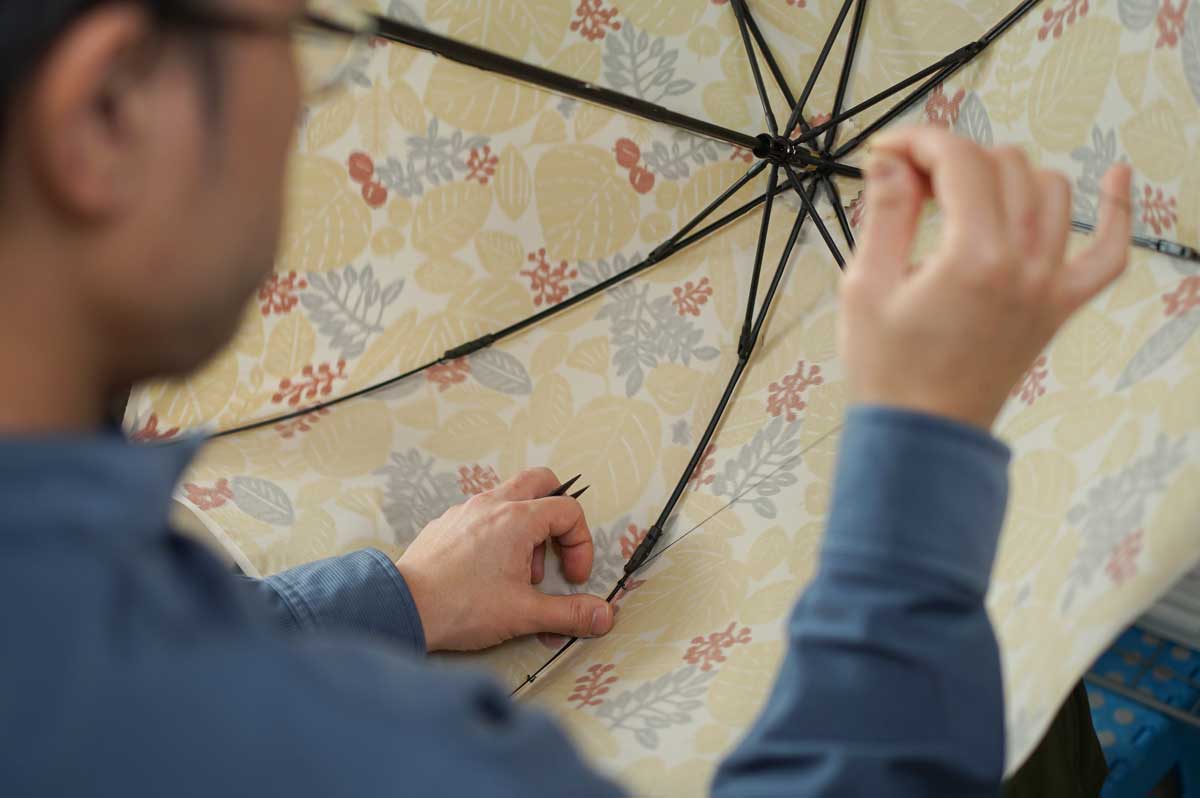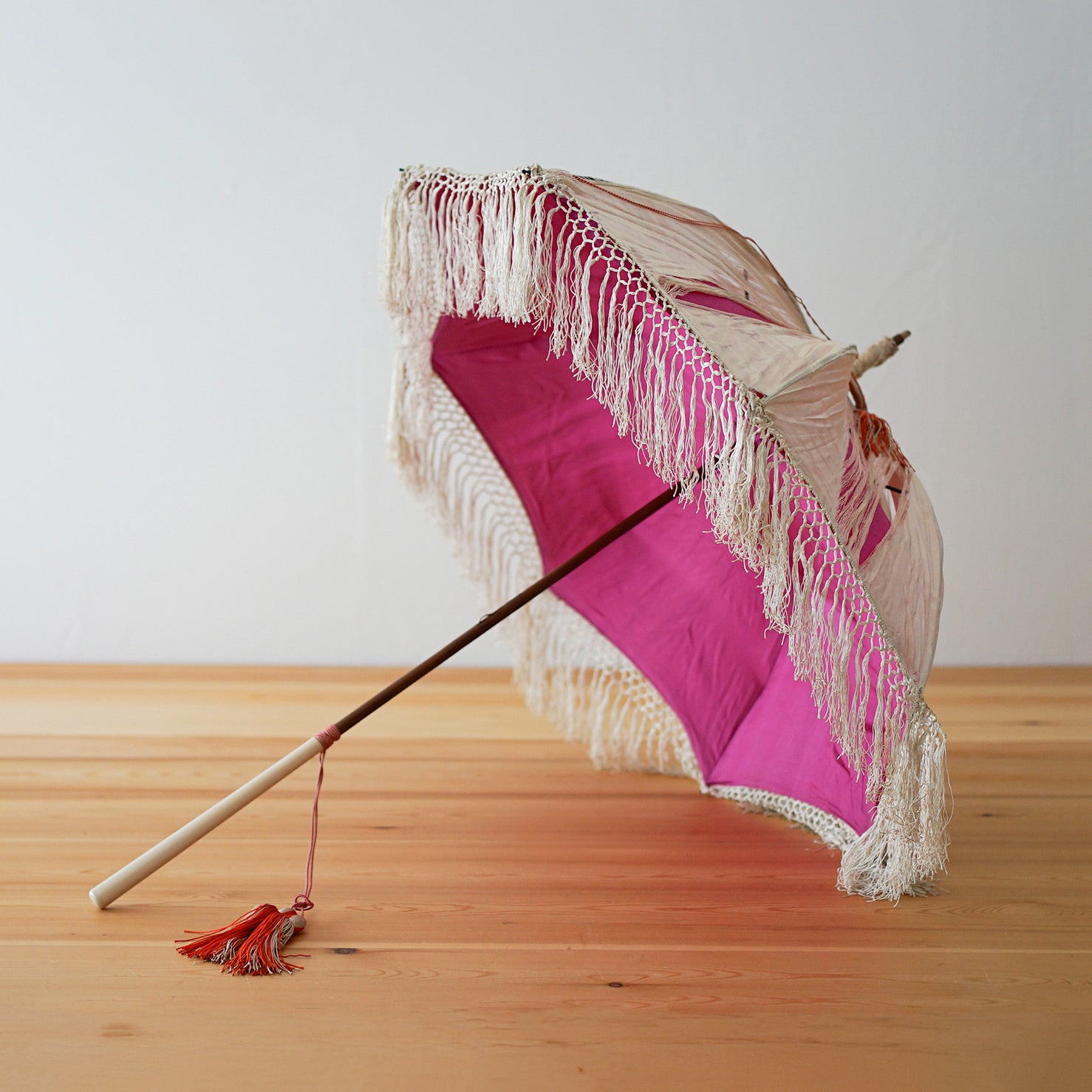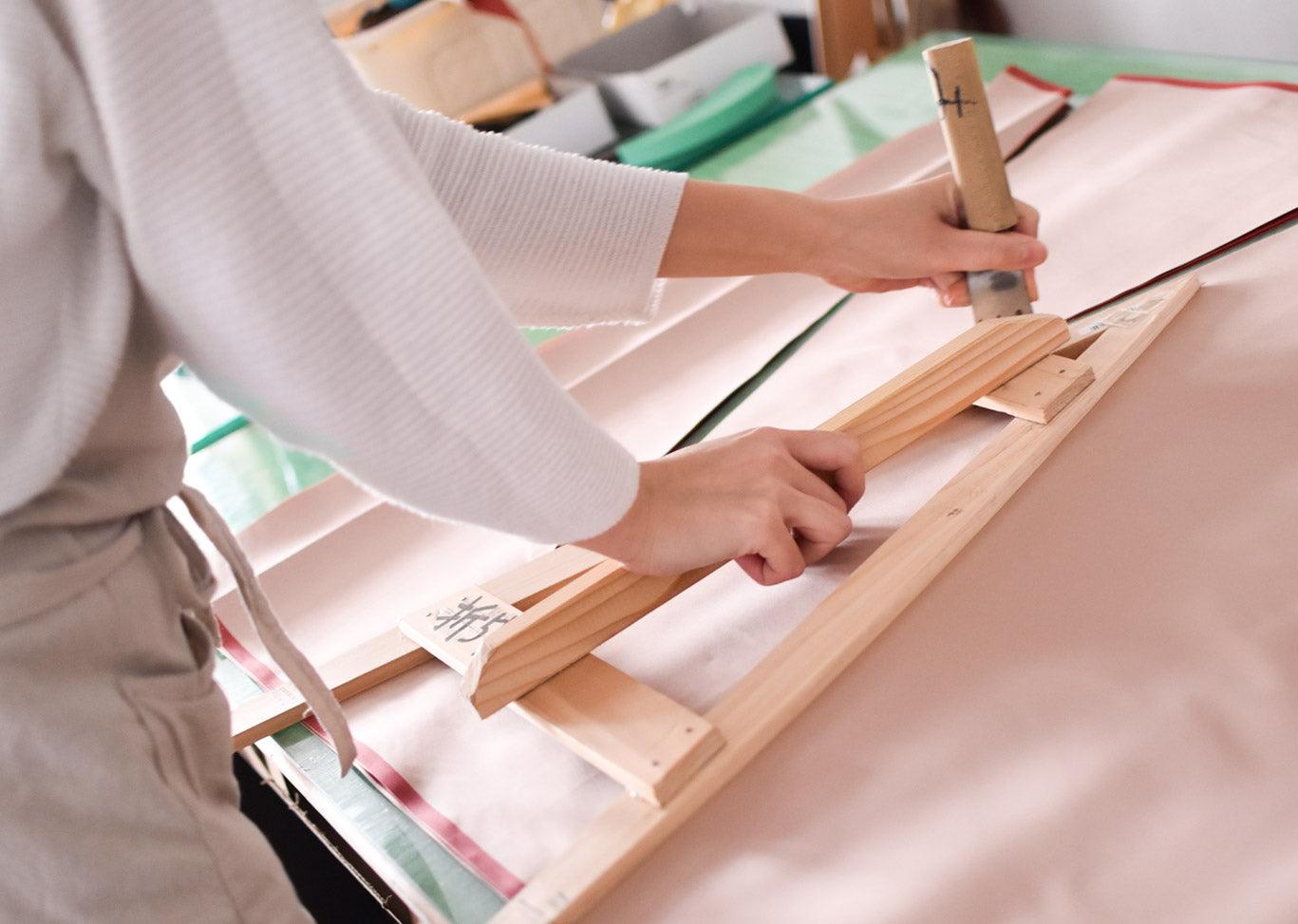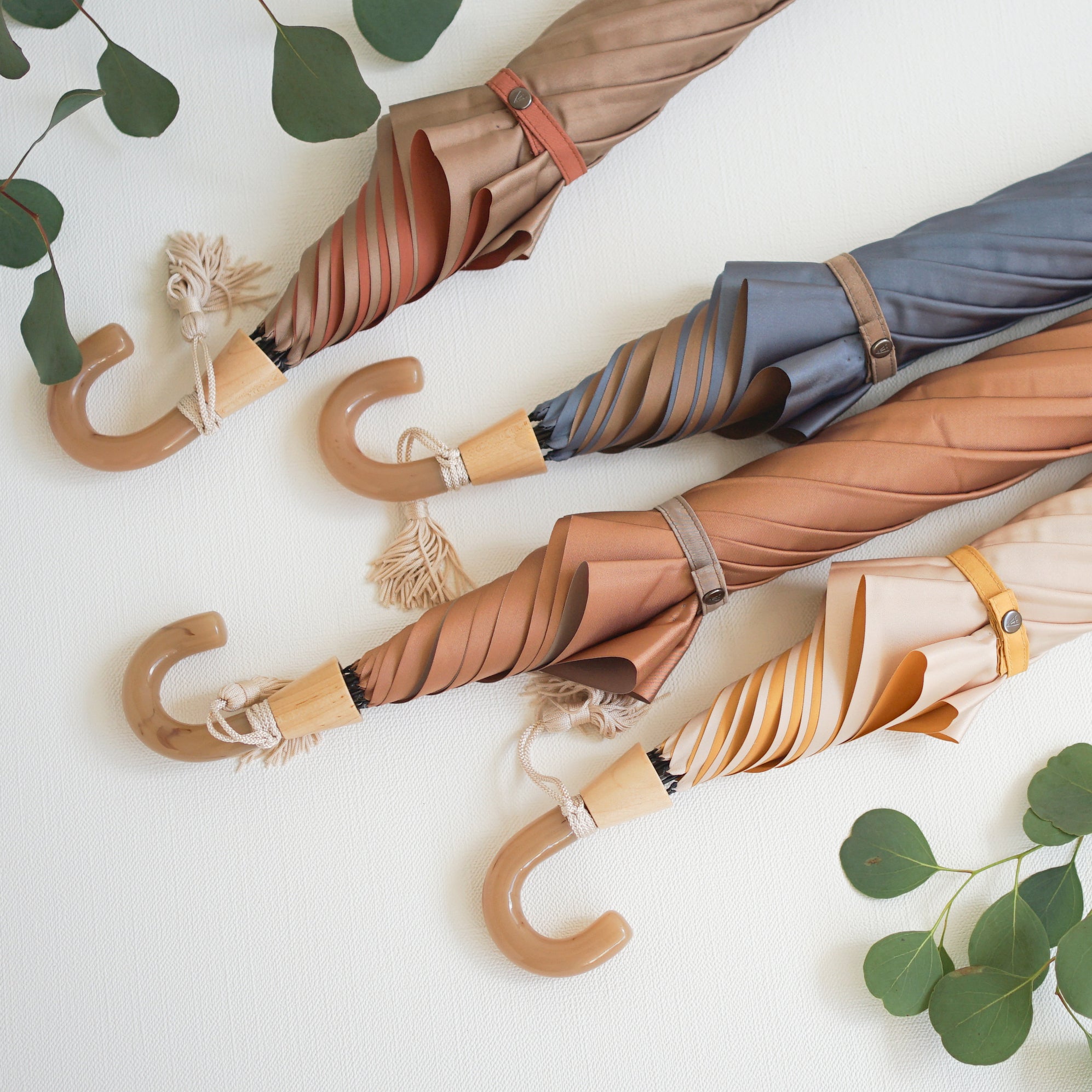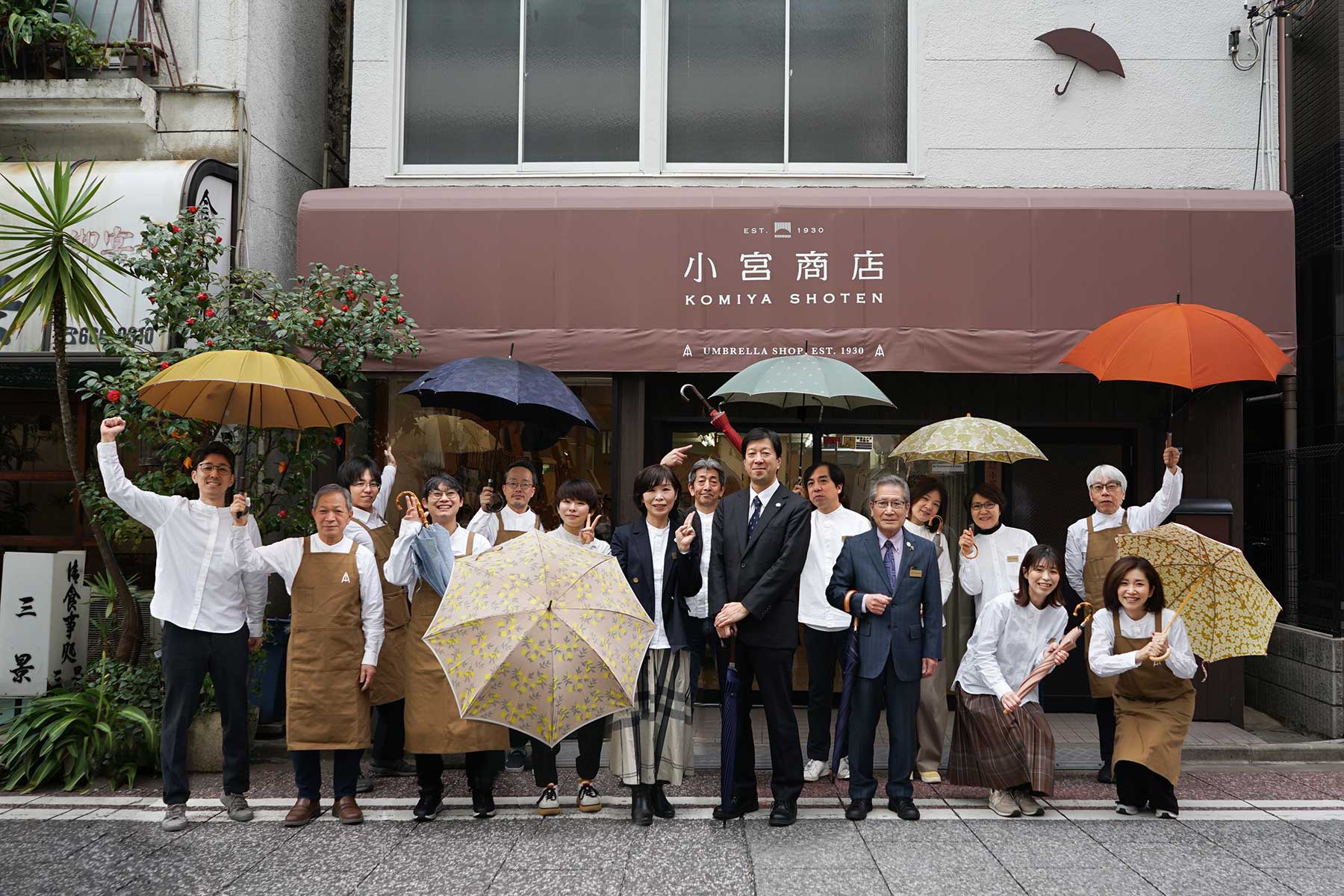Spring water from Mt. Fuji creates deep, vibrant colors
Mt. Fuji is Japan's most famous mountain. At its base, in Kai Province (present-day Yamanashi Prefecture), the only thing that grew in the volcanic ash soil unsuitable for agriculture was the mulberry tree.
As we mentioned in our previous article, sericulture, which uses the leaves as food, became popular and the area developed from silk weaving into a production area for Western-style umbrella fabric (☞ Kai Province, which went from being a barren land to becoming a famous production area for Western-style umbrella fabric).
However, there is another main reason why Yamanashi became a producer of umbrella fabric: the abundant spring water provided by Mount Fuji.
There are two ways to add color to fabrics, whether they are Western clothing or umbrellas: "yarn dyeing," in which the threads are dyed before weaving, and "piece dyeing," in which the fabric is dyed after weaving. Of these, Yamanashi has traditionally continued yarn dyeing, which takes time and effort, but results in a luxurious fabric.
The water used in the dyeing process is a major factor in yarn dyeing. The cleaner the water, the better the color will be. The spring water of Mt. Fuji, which flows through lava layers over a long period of time and springs to the surface, is crystal clear and is also very popular as mineral water. Thanks to this natural blessing, the yarn is dyed deeply and vividly.
A constant water temperature ensures stable production of beautiful umbrella fabric
Spring water has an additional benefit: because it is groundwater, the water temperature remains constant throughout the year.
In fact, the way the color is dyed varies slightly depending on the temperature of the water. In river water, the water temperature is naturally different in summer and winter, so it is difficult to maintain a uniform color.
On the other hand, if the groundwater is always at the same temperature, the color will always be the same. Yamanashi, located at the foot of Mount Fuji, is the perfect place to mass-produce yarn-dyed yarn and simultaneously produce beautiful umbrella fabric in a stable manner.
The barren land caused by lava and volcanic ash has nurtured the sericulture industry and blessed with spring water. In a sense, the development of Japanese umbrellas has been supported by Mt. Fuji. Even today, yarn-dyed umbrella fabric is produced in Yamanashi and used in high-quality Japanese umbrellas. It can be said that the blessings of Mt. Fuji continue to nourish the umbrella industry, just as they did in the past.
Well, I should mention that Yamanashi produces a rare umbrella fabric that is unique in the world. It is "narrow-width woven umbrella fabric." It is produced using a shuttle loom, which is now rare. I'll tell you that story next time.


